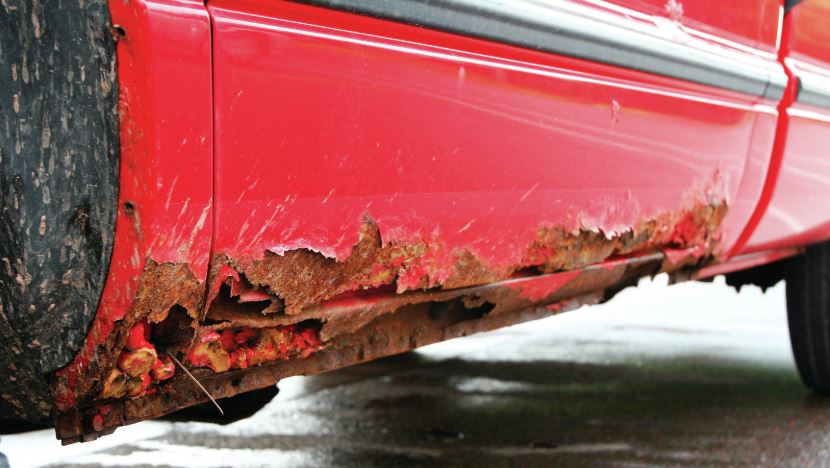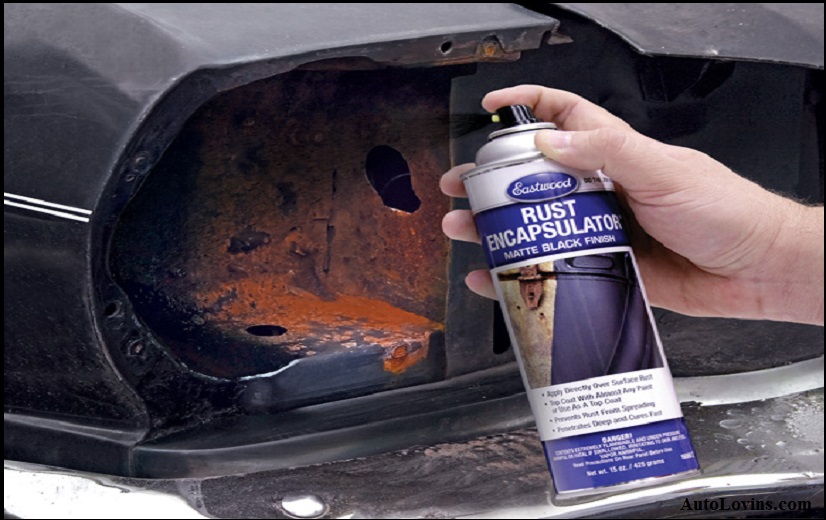
Your car is probably one of your most cherished possessions. However, after some time, you start noticing some rust on the edges and surfaces. This not only makes the appearance of your car less appealing but also diminishes the market value of the vehicle significantly. Over time, the rust eats up the car’s structure and causes major mechanical issues that interfere with its performance.
Removal of rust can be a nightmare for most car owners. Luckily, if you are already experiencing rust problems, there are foolproof tips that you can use to stop rust on your car. Here are is an insightful guide to prevent rust on your vehicle and save you lots of repair costs and frustrations.
Table of Contents
Wash and Wax your Car Regularly
This may sound obvious, but it is one of the most important ways to stop rust on your vehicle. Typically, most car owners choose to wash their cars just once a month. This leaves an ample amount of time for dust as well as debris to continue causing harm to the car leading to the formation of rust.
Also, organic compounds present in bird droppings may lead to chemical reactions on the coat of the vehicle, causing further damage if not cleaned. Automatic fluids such as automatic transmission fluids are also leading causes of rust formation when they spill on the car surface.

Tips
- Wash your car thoroughly after every two weeks.
- Wash the car once every week during the winter when roads are usually salty or if you live near the ocean.
- Add a tablespoon of baking soda to your water and soap to help neutralize salt acidity together with other ice-melting chemicals.
- If your car is at too much risk of being damaged by rust due to salty roads, you can spray the underside with a high-quality car lubricant.
- Use automotive soap when cleaning.
- Always clean the inside of the car thoroughly and dry spills on the surface immediately to prevent the accumulation of rust.
- Use a car cover to prevent the car surface from accumulating dust, debris animal droppings, among other chemicals when you are not using.
- Wax the car every once per month to prevent any chances of damage by water through oxidation.
Inspect thoroughly for early detection of rust
Another important way to stop rust on your car is to inspect for rust. Try to identify all the spots where rust can find its home. The exterior surfaces indicate the presence of rust when you see blisters or bubbles on the paint. The blisters and bubbles are usually an initial stage of the commencement of rust. Advanced rust, on the other hand, has a reddish-brown color and displays a flaxy texture. Advanced stubborn rust often damages the car surface at an incredibly fast rate and, if not stopped, causes irreversible damage.
The other two areas that are most susceptible to rust include the undercarriage as well as the car engine. Use a flashlight for the inspection, so it is easier for you to identify the rusty parts. Always remember to inspect the wheels, side-mirror connection points, the antennae, drain holes, and other places where body components meet. Remember that if you do not identify rusty spots early enough, it may cause irreversible damage to the affected area, and you may have to replace the whole part immediately with a custom made one.
Stopping minor rust

1. Clean the affected area – Wash the small area affected with rust using water and automotive soap to remove any dirt, debris, or automotive oils.
2. Cover surrounding areas – Use masking tape or painting tape to cover the areas surrounding the rusted area. This protects these areas from damage when you are repairing the rust.
3. Get rid of the rust – You can remove the rust by flaking using a razor blade to make it easier to flake off the bigger rust flakes.
4. Sand the affected area – It is advisable to use 40 grit sandpapers to sand the area and remove every visible speck of rust.
5. Apply rust arrestor – Rust arrestors function to prevent the rust from occurring once again. Apply a thin coat to the previously rust affected area using a brush. You can buy a rust protector from any local automotive store around you. Allow the rust protector to dry completely before applying the primer.
6. Apply a primer – When the rust protector is completely dry, ensure that you cover any visible scratches or holes in the affected area using the primer. Allow the primer to dry thoroughly before applying a second coat. You may add additional primer coats if find it necessary.
7. Apply touch up paint – after you finish applying the primer, apply to touch-up paint. Ensure that you use the correct touch-up paint for your car. Use the code next to your cars VIN number to buy the accurate touch-up paint. With the matching code, it is much easier for you to buy the touch-up paint from the local automotive stores as well as dealership stores around you.
Stopping Major Rust

When you do not arrest rust during the early stages, it progresses to major rust, which eats up a large chunk of the metal, causing severe damage. If the damage continues, there is, need to replace the damaged part using a custom meat sheet as we mentioned earlier in this article.
1. Mask the surrounding areas – Just like minor rust. You have t cover the areas surrounding the area affected with major rust using masking tape to protect its parameters.
2. Protect yourself – This job is quite intense, and you have to wear protective gloves, a gas mask as well as protective goggles to keep your eyes safe. The metal parts may cause injury to your hands, or even the rust may get into your eyes.
3. Use a grinder to remove the large chunks of rust – If you do not have a grinder, you may have to buy one to aid in this process. Use the grinder to remove the large chunks of rust until you reach the clear, clean metal. Remember not to put too much pressure since you may end up causing more damage to the affected area.
4. Sandpaper the clean metal – Use 40 grit sandpaper to sand the affected area so that it’s much smoother. Apply pressure evenly for the best results. Remove all the visible rust specs.
5. Hammer the clean sheet metal – Hammer the clean sheet metal in the previously affected area inwards to create several dents, so it is easier to fill the fiberglass filler.
6. Remove rust on the backside of the affected area – the Chances are that rust also affected the underside of the affected area. Remove the rust on the backside area to prevent it from penetrating the area that you are repairing. Ensure sand the backside until it becomes a clean bare sheet metal.
7. Coat the backside of the affected area – Coat the bright bare sheet metal of the backside using a rubberized coating. The rubberized coating protects the underside efficiently and does not chip as compared to paint.
8. Fix the self-adhesive body patch – The body patch is simply a stainless steel mesh that you size up according to the area you want to fill. You can do this using the regular home scissors. Put it behind the affected areas, so it is easier to fill the fiberglass filler. The self-adhesive body patch makes it easier to fill in the fiberglass filler.
9. Apply the fiberglass filler to the affected area- After mixing the filler with the hardener; apply an adequate amount to the affected area. You can use more coats to cover the affected area adequately and allow it to cure.
10. Sand it – Sand the area once again, so it is even with the surrounding areas to make it nice and smooth. You can use 180 grit sandpapers to achieve a more seamless finish. This may take lots of time, but the results are indeed impressive. You may also use a 300 or 400-grit sandpaper to make the area smoother.
11. Apply the primer – Apply the automotive primer. You may use three coats if you find it necessary before sanding the area for a smooth finish for the final paint job.
12. Paint with touch up paint – You can have the area painted with a professional if you are not sure of your DIY skills. After getting your car‘s matching touch up paint, paint the area effectively. You may need to use many layers to achieve the desired effect. Always allow each coat to dry completely before applying the next.
13. Cover with a clear coat – The last step is to cover the painted area with a clear layer to give it an extra shine that matches the surrounding areas of the car. Clean the area using soap and water when the coating dries.
How to Stop Rust on your Car? (Video Review)
Wrap Up
These foolproof tips will surely stop rust on your car. It is essential that you always inspect the vehicle for any signs of rusting such as bubbles, blisters inside the paint, so you address the situation early enough, and prevent further damage. Wash the car frequently, especially if you live next to an ocean or during the winter. You may have a professional clean the surface as well as the undercarriage using high pressure if when it comes to stubborn salt and grime. It is also a great idea to spray rustproof liquid on the surface of the car to prevent any chances of rust occurrences.
Always use a clean microfiber towel to wipe down any wet surface to avoid rust through the process of oxidation. It is also good practice to wipe the car before keeping it in the garage since it you’ve used it out in the snow or rain.
